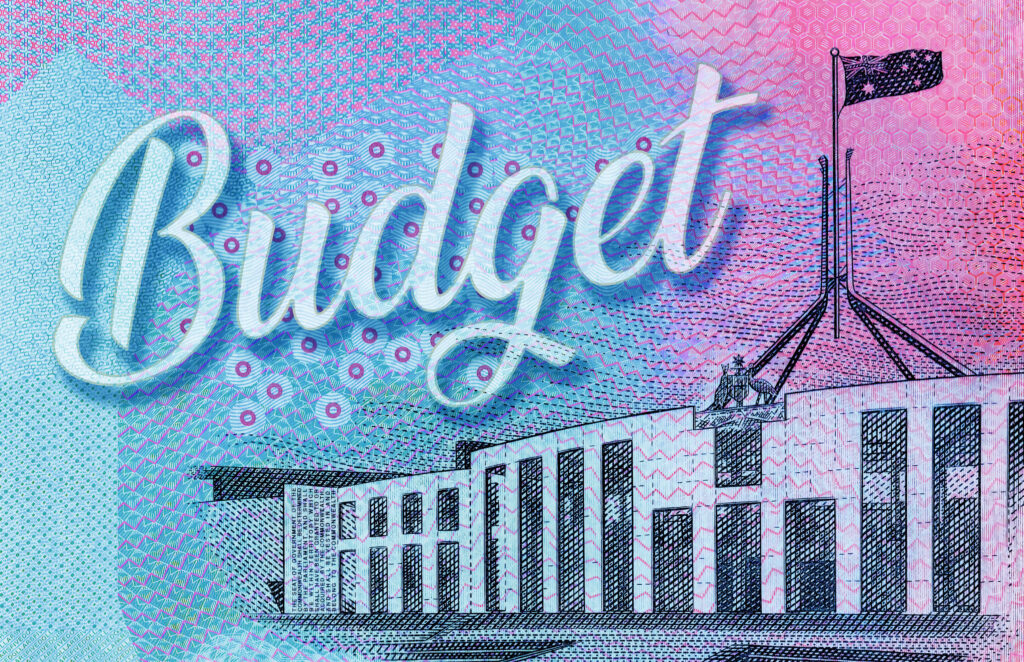Now that the federal election is out of the way, and another financial year is drawing to a close, it’s a perfect time to look back at all you’ve achieved over the past 12 months and focus on a fresh start for the financial year to come.
While market volatility continued, markets largely recovered from April’s losses in May. However, the legal and economic uncertainty of US tariffs remain a key concern for global and local markets.
The end of the month saw the S&P/ASX 200 react positively at first to the news that a US federal judge had blocked the tariffs. When an appeals court temporarily stayed the tariffs hours later, a mini sell-off followed. The index has jumpstarted its way to a three-month high, not quite back to its best in February.
There was a sigh of relief all round when the Reserve Bank lowered interest rates in May by 25 basis points to 3.85%. The RBA’s move came with a caveat that, while domestic demand “appears” to be recovering and real household incomes have picked up, the outlook is unclear because of both local and international developments.
Inflation was slightly higher than expected for the 12 months to April, but it remained within the RBA’s target range and many economists are predicting another rate cut in July.

Market movements and review video – June 2025
Stay up to date with what’s happened in the Australian economy and markets over the past month.
There was a sigh of relief all round when the Reserve Bank lowered interest rates in May by 25 basis points to 3.85%.
Markets largely recovered from April’s losses during the month as US President Trump’s stance on trade softened.
However, the legal and economic uncertainty of US tariffs remain a key concern for global and local markets.
Click the video below to view our update.
Please get in touch if you’d like assistance with your personal financial situation.

Your 30 June superannuation checklist
With the end of the current financial year fast approaching, time is running out if you’re planning to boost your superannuation balance before 30 June.
Even depositing a small amount of extra money into your super account before 30 June this year could make a big difference to your overall retirement balance over the longer term, thanks to compounding investment returns.
Below are five ways you could be able to add more into your super fund account before 30 June, subject to various conditions.
Concessional (before-tax) contributions
You’re able to have up to $30,000 in concessional (pre-tax) contributions deposited into your super account each financial year, which include compulsory Superannuation Guarantee payments made by your employer and any personal contributions you choose to make.
Concessional contributions are taxed at 15%, instead of your marginal tax rate.
If you’re currently below the annual limit you could take the opportunity to add personal contributions into your super account before 30 June. This can be done either from your pre-tax salary via an existing salary-sacrifice arrangement through your employer, or by using after-tax money to deposit funds directly into your account.
If you deposit after-tax money into your fund, you may be able to claim a tax deduction in your next tax return given that concessional contributions are taxed at 15%.
However, to claim a deduction, you must complete an Australian Tax Office (ATO) form advising your super fund. You must also receive an acknowledgement from your super fund. And both these things will need to happen before you lodge your next tax return.
Keep in mind that this is usually a busy time of the year for super funds, so there could be processing delays. Many super funds have a June cut-off date for processing personal super contributions, which can be one to two weeks before the end of the financial year.
Be aware that if you exceed the total annual limit of $30,000 at 30 June the ATO may require you to pay additional tax.
To avoid exceeding the annual limit it’s important to add up your employer contributions during the financial year plus any extra contributions you’ve already made, and then calculate the concessional contributions balance that’s left.
Carry forward (catch-up) concessional contributions
You may have another option available that will enable you to get more concessional contributions into your super account before 30 June.
That depends on your superannuation balance and whether you’ve used up your maximum concessional contributions amount this financial year (that is, you’ve already contributed $30,000).
Individuals with a total superannuation balance below $500,000 as at 30 June of the previous financial year can carry forward and apply their unused concessional contributions for up to five financial years.
For example, if $15,000 in employer and personal concessional contributions were made into your super account in 2019-20, you may be able to take advantage of your unused $10,000 gap from that financial year (the maximum concessional contributions limit was $25,000 in 2019-20) and roll it over into this financial year’s contributions.
This $10,000 would be in addition to the maximum $30,000 in allowable concessional contributions that can be made this financial year (allowing you to contribute up to $40,000 in this example).
For many Australians the unused portion of concessional contributions available from previous financial years may add up to tens of thousands of dollars.
You can view and manage your concessional contributions and carry-forward concessional contributions by accessing the ATO’s online services by logging in to your myGov website account.
Non-concessional (after-tax) contributions
Non-concessional contributions are after-tax personal contributions you may be able to make into your super fund, which can’t be claimed as a tax deduction.
They’re separate from your annual concessional contributions and are subject to their own annual limits.
The main advantage of making non-concessional contributions is to accumulate more of your money inside the super system.
Earnings from any investments inside your super account before age 60 are taxed at 15%. After age 60, if you have stopped work and access your super as a pension income stream, your investment earnings and the payments you receive are tax free.
Typically, non-concessional contributions are made using the proceeds from larger asset sales. But there’s no minimum non-concessional contribution amount.
The non-concessional contributions maximum limit is currently $120,000 each financial year. However, under what’s known as the “three-year bring-forward rule”, you may be able to make a $360,000 non-concessional contribution in one financial year.
You’re then unable to make further non-concessional contributions for the next three financial years.
If you have more than $360,000 to contribute in total, you could make use of the current annual $120,000 limit before 30 June this financial year. Then, from 1 July, you could use the three-year bring-forward limit to contribute up to another $360,000.
Speak to us if you need to, as there are circumstances where the “bring-forward” rule does not apply.
Home downsizer contributions
Although this option isn’t strictly tied to the financial year end, you may be able to contribute up to $300,000 into your super fund using proceeds from selling your principal place of residence if you’re aged 55 or older. Couples can contribute up to $300,000 into their super each.
A downsizer contribution forms part of the tax-free component in your super fund. It can be made in addition to non-concessional super contributions and doesn’t count towards the annual contributions cap.
Ultimately, however, any downsizer contribution you make will count towards your transfer balance cap when you eventually move your super into pension phase.
There are a range of conditions around downsizer contributions, and it’s prudent to check these on the ATO website or speak to us.
You or your spouse must have owned your home for 10 years or more prior to the sale, with your ownership calculated from the date of settlement when you bought your home.
There’s also a strict definition of what constitutes a home. It must be in Australia and can’t be a caravan, houseboat, or a mobile home.
You’re unable to use the downsizer scheme to deposit funds from the sale of an investment property. These can only be done through a non-concessional (after-tax) super contribution.
A downsizer super contribution must be made within 90 days after you receive the proceeds of your home sale. The ATO will allow for a longer period due to circumstances beyond your control.
It’s prudent to check all the conditions and your eligibility on the ATO website or seek tailored advice from us.
Spouse contributions
The ATO allows couples to split their annual employer concessional contributions, as well as additional salary sacrifice and personal super contributions.
There are two ways of contributing to your spouse’s super:
-
You may be able to split contributions you have already made to your own super, by rolling them over to your spouse’s super – known as a contributions-splitting super benefit.
-
You can make a super contribution directly to your spouse’s super, treated as their non-concessional contribution, which may entitle you to a tax offset.
Any splitting of contributions must be done after the end of the financial year in which the super contributions were made.
Super splitting can be done at any age, but a spouse must be either less than age 60, or between age 60 and 65 years and not retired.
Couples wanting to split their super contributions first need to check whether their super fund allows it.
The full guidelines around contributions splitting, including eligibility and the application form that needs to be completed, are available on the ATO’s website.
Consider an adviser
Super and retirement planning is a complex area.
Take care to understand the contributions types and limits carefully as there are significant tax penalties for exceeding the applicable contributions caps.
There are also aged-based limits on contributing into super.
If you’re unsure about your super options before June 30 and need some advice, consider consulting us.
Source: Vanguard May 2025
Reproduced with permission of Vanguard Investments Australia Ltd
Vanguard Investments Australia Ltd (ABN 72 072 881 086 / AFS Licence 227263) is the product issuer. We have not taken yours and your clients’ circumstances into account when preparing this material so it may not be applicable to the particular situation you are considering. You should consider your circumstances and our Product Disclosure Statement (PDS) or Prospectus before making any investment decision. You can access our PDS or Prospectus online or by calling us. This material was prepared in good faith and we accept no liability for any errors or omissions. Past performance is not an indication of future performance.
© 2025 Vanguard Investments Australia Ltd. All rights reserved.
Important:
Any information provided by the author detailed above is separate and external to our business and our Licensee. Neither our business nor our Licensee takes any responsibility for any action or any service provided by the author. Any links have been provided with permission for information purposes only and will take you to external websites, which are not connected to our company in any way. Note: Our company does not endorse and is not responsible for the accuracy of the contents/information contained within the linked site(s) accessible from this page.

Smart moves before the financial year ends
The end of the financial year is an opportunity to optimise your financial strategy, take advantage of tax deductions, and set yourself up for the new financial year.
Whether you’re looking to maximise tax benefits, rebalance your investment portfolio, or to simply ensure you’re ticking all the right boxes, smart end of financial year (EOFY) planning can make a big difference.
So, to finish the financial year on a high note, start by mapping out your finances and investment portfolio and collect all the relevant documents. It can be a tedious task if your filing isn’t up to scratch, so it can be useful to set up a system as you go to make it easier for the next financial year.
You will need your bank statements, superannuation fund statement, self- managed super fund (SMSF) paperwork if relevant, a record of any capital gains or losses from the sale of assets such as shares or property, details of share dividends including any dividends earned through a Distribution Reinvestment Plan, and records of any other investments or income received.
Looking for deductions
On the other side of the ledger, there are limits on deductions for most categories of expenses but it’s a useful exercise to gather the evidence of all costs associated with employment and income-producing investments – whether or not they’re tax deductible.
For the most part at least, some deductions are allowed for certain work-related costs, donations over $2 to approved not-for-profits, the costs of managing your tax affairs, eligible investment property expenses, income protection insurance premiums (if the premiums are paid outside of your super fund), and expenses linked to a financial investment – such as attending a seminar directly related to the investment or the cost of account keeping fees on bank accounts used only for investment.i
The ATO is keeping a close eye on work-related expenses and working from home deductions this year, saying there must be “a close connection to your income earning activities, and you should be prepared to back it up with records like a receipt or invoice”.ii
Get ahead with early payments
One way of maximising deductions in this financial year is by paying early deductible expenses due next year such as insurance premiums, subscriptions, or business rent if applicable. But remember to check first to see which expenses may be eligible to prepay.
Small businesses also have access to an instant asset write-off for the business portion of assets under $20,000, that were purchased and used in this financial year. The instant asset write-off is available to businesses with an annual turnover of less than $10 million.iii
Review your portfolio
At this stage of the year, it’s a good time to take stock of your investments including shares, superannuation and property. You may want to check that your investment strategy is still appropriate for your needs and expectations and review any underperforming assets.
The review will help you to decide whether you have an opportunity to top-up your super fund or SMSF. If you have funds to spare, making the most of the total contribution amount allowed both in this financial year and for the last five years, could give your retirement planning a serious boost.
It’s also a chance to review super indexation changes due from 1 July to see if there’s a need to take action before 30 June or to wait. For example, the amount that can be transferred into the retirement phase (known as the general transfer balance cap) will increase to $2 million on 1 July, up from $1.9 million this financial year. That might affect the decision to begin a pension this month as opposed to next.
There’s a lot to consider right now to make sure you’re optimising tax savings and that your planning today leads to a financial reward tomorrow. Give us a call if we can help.
i Deductions you can claim | Australian Taxation Office
ii ATO unveils ‘wild’ tax deduction attempts and priorities for 2025 | Australian Taxation Office
iii Instant asset write-off for eligible businesses | Australian Taxation Office




